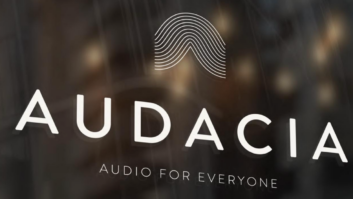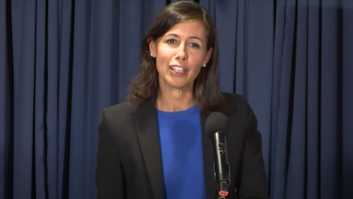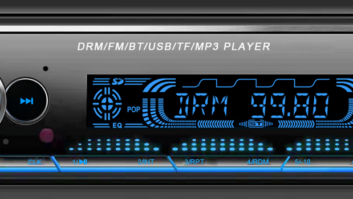Can radio cash in on �advanced� advertising? I wonder if what is now going on in television will impact radio soon.
The Advanced Television Systems Committee is rapidly cranking out candidate standards. The physical layer (the �PHY� to TV engineers), or what we�d call modulation for the most part, probably has little to offer radio. Interestingly, ATSC 3.0 may very well end up using FM-IBOC�s video features. But the rest is a bit scary.
ATSC 3.0, the new standard replacing ATSC 1.0 that brought digital to television, improves a lot of what has proven to be outdated in TV. More efficient encoding, support for higher resolution and the introduction of immersive sound are all worthy objectives, but the real deal is the shift from lining up and clocking out fixed packets of audio, video and data to physical layer pipes�. pipelines of Internet protocol data.

ATSC 3.0 is more about the Internet than TV. The desired receiver is a new IP gateway in the home or a wireless device with Internet access. In the home, the coax from the antenna doesn�t go to the TV sets anymore � it goes to the household�s �gateway router� where the over-the-air TV content combines with the Internet service provider�s connection. From there, this bundle of content and connections can be shared with every Ethernet-wired and Wi-Fi-receptive device in the home.
Some of this is about cool tricks like using a smartphone or tablet to control the TVs, DVRs or other devices in the home. But most of this is about the many limitations of the Internet when it comes to delivering video, in particular live video.
The Internet struggles with buffering and access times (think channel change), and it breaks under the stress of supplying the same program to very large numbers of users. It�s an unimaginable task for the Internet to provide the kind of quality of service and capacity to rival broadcast TV�s offerings.
ATSC 3.0�puts a high-capacity, low-latency, high-quality-of-service IP delivery path right to mobile devices and the household router/TV receiver by way of an over-the-air TV transmitter. Hopefully, broadcasters will continue to put attractive programming on this new platform, and naturally, they�ll continue to sell eyeballs to sponsors.
Internet advertising is unbelievably complex and efficient; Internet advertising is targeted. It�s no coincidence that you get banner ads and pop-ups that somehow seem to read your mind. Imagine the power of Internet targeted (�advanced�) advertising if it were applied to TV.
For some of us, there is a creepy side. I�m learning to live with the idea that everything I do on the Internet, everything I buy with a loyalty or credit card, everywhere I go that my license plate can be read,�is swept up into the �big data� cloud. From there, messaging is tailored to me, first for the few minutes a day I spend on the Web, and soon on the TV I watch for a third of my waking hours. No longer will I watch ads for things I will never buy or political ads that aren�t aware of my biases and beliefs. But I�ll see many ads for things my profiles indicate I have a weakness for � now in my living and bedroom as I passively watch.
Can broadcast radio cash in on �advanced� advertising? Will the next generation of radio evolve into pipes of universally useful IP the way TV is currently transitioning? If so, my �smart� radio will likely have cookies and ad selection engines picking the spots I hear and tracking each impression, dutifully reporting the results back to the mother ship. If that�s what it takes to keep radio around, then so be it.












